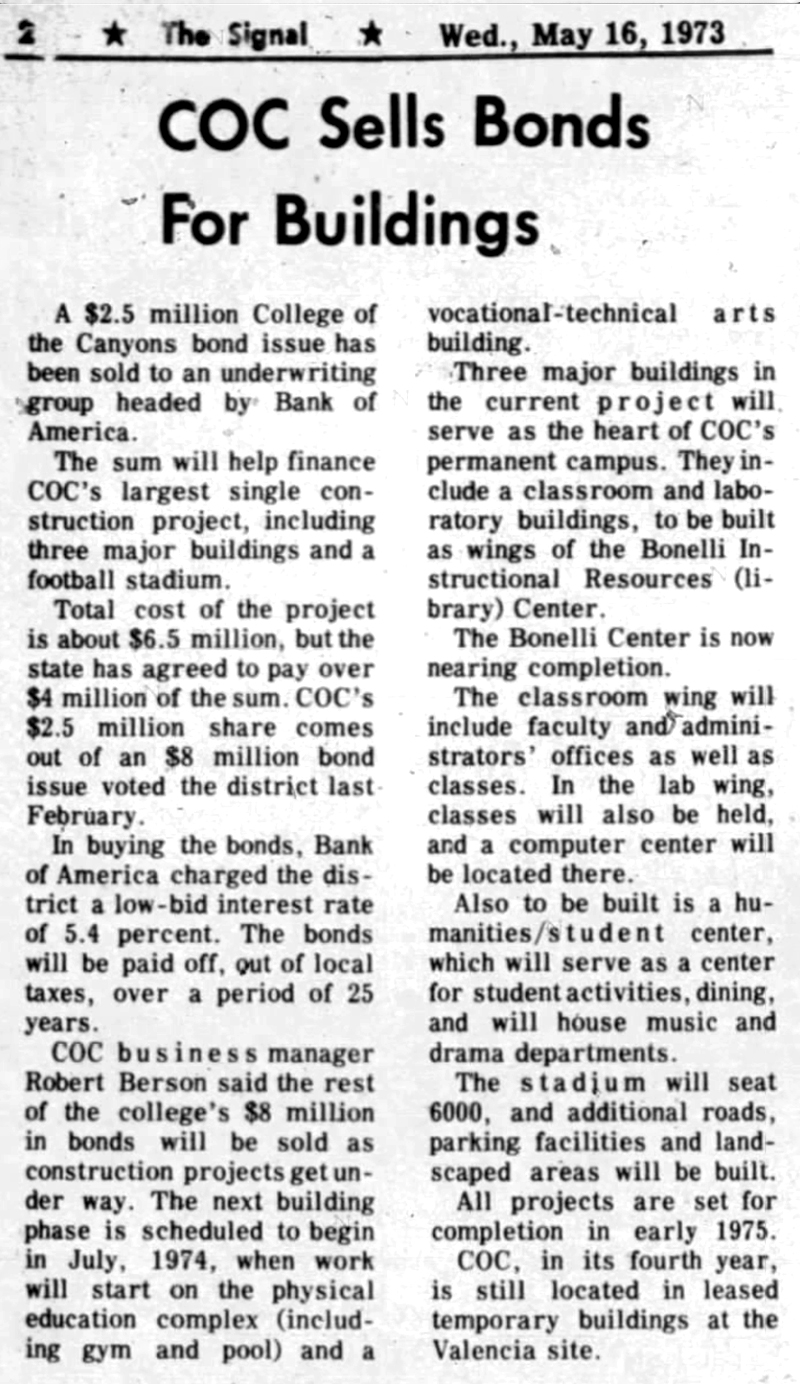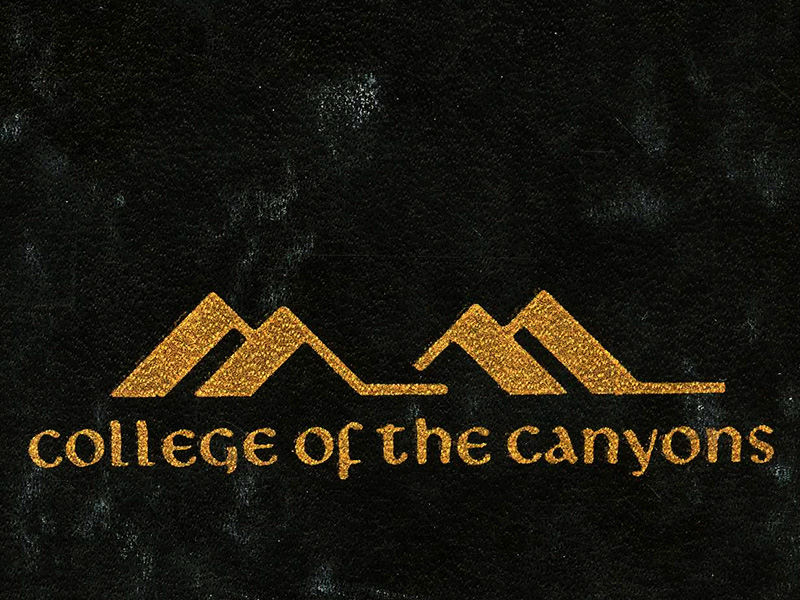|
|

No More Portables
Voters OK $8 Million Construction Bond Measure
to Complete College of the Canyons for 7,500 Students.
Special Election February 6, 1973.
|
Above: A 4-page special edition of the student newspaper, "The Canyon Call," paid for by the "Citizens' Committee to Complete College of the Canyons" and COC's Associated Student Body, distributed in the January 31, 1973 edition of The Signal newspaper, stumps for passage of an $8 million construction bond measure in a special election scheduled for the following Tuesday, February 6, 1973. At the time, COC was an all-temporary campus in Valencia with approximately 1,900 students (1,000 daytime, 900 nighttime) housed in leased portable buildings — although certain permanent buildings were already under construction including the Dr. William G. Bonelli Instructional Resource Center (IRC). College officials expected the $8 million in local funds to unlock an $11.5 million state match from a statewide $160 million community college construction bond act that passed the previous November. The funds would be pooled to complete the IRC, the Student Center, laboratory classrooms, the Cougar Stadium football field and more. Local voters overwhelmingly said "Yes." When the ballots were tallied that same night at COC, the bond measure prevailed with 79.7 percent of the vote (3,618-922). It needed a two-thirds supermajority to pass. All parts of the Santa Clarita Valley within the college's service area pushed it over the line except for Castaic "proper" and one of two Friendly Valley precincts. Some Valencia precincts came in above 90 percent. Buildout was targeted for 1975 to accommodate an estimated 7,500 students by 1982. (For comparison purposes, COC served 32,894 students during the 2017-2018 academic year.) Read more about the bond campaign here.
Download individual files here.
|
SEE ALSO:
District Named "Santa Clarita," College "Canyons" (1967/1969)
Future Valencia Campus
Hart Grads Pick COC 6/1969
COC Opens 9/1969
COC at Hart 1969
Trustees 1969-70
Campus Dedication 10-26-1970
Instant Campus 1970
Modular Buildings Early 1970s
Graduation 1971
Fashions 3/1972
Claffey Elected 1972
Marketing Brochure, IRC Rendering ~1972
1973 Construction Bond
1973 Yearbook
Bill Leach, Award Winner 3/1973
IRC Construction 5/1973 (Mult.)
IRC, Cougar Statium Const. 7/1973 (Mult.)
IRC Construction 1973-74 x3
Reagan at IRC Dedication 1974 x2
1975 Yearbook
1976 Yearbook
1977 Yearbook
Ex-Trustee Don Benton Nominated to Run Selective Service System, 2017
|
The site owner makes no assertions as to ownership of any original copyrights to digitized images. However, these images are intended for Personal or Research use only. Any other kind of use, including but not limited to commercial or scholarly publication in any medium or format, public exhibition, or use online or in a web site, may be subject to additional restrictions including but not limited to the copyrights held by parties other than the site owner. USERS ARE SOLELY RESPONSIBLE for determining the existence of such rights and for obtaining any permissions and/or paying associated fees necessary for the proposed use.

























